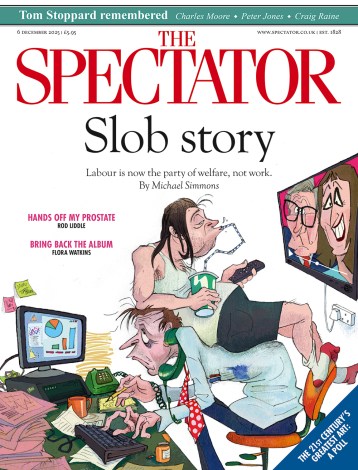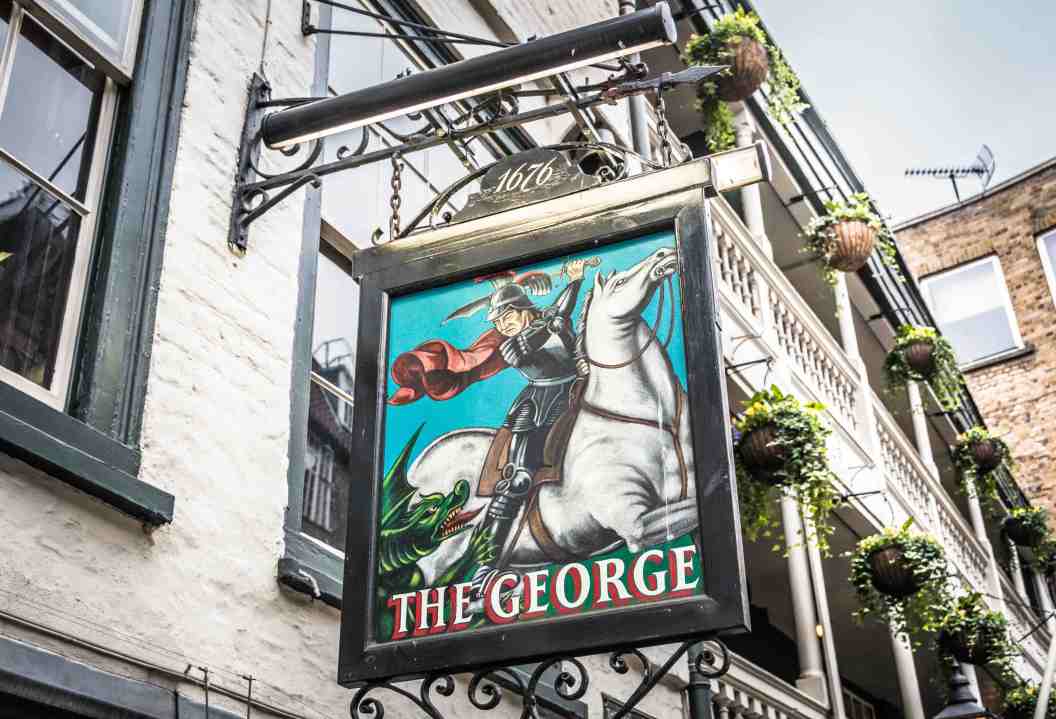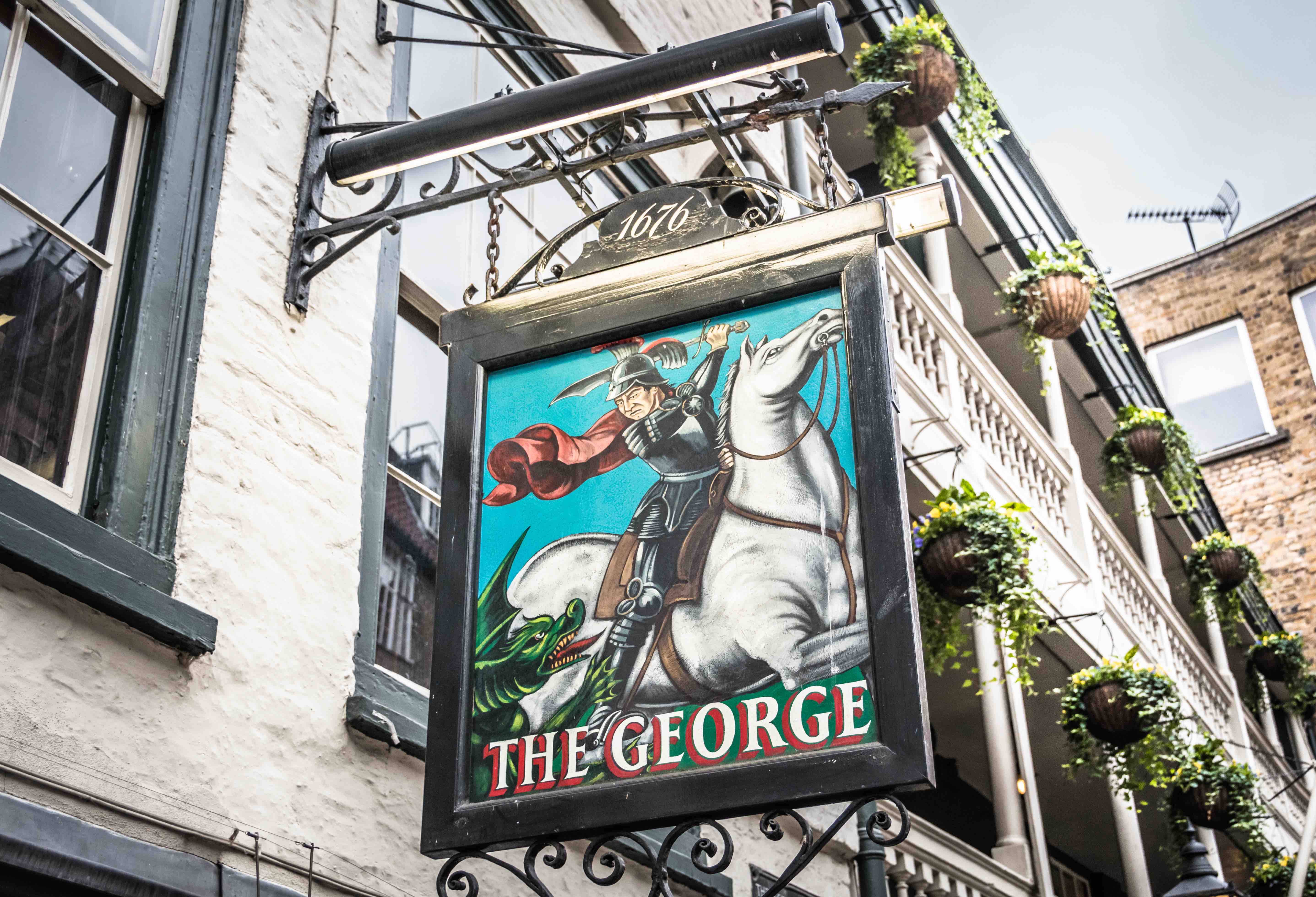From Geoffrey Chaucer’s Tabard and Martin Amis’s Black Cross to Thomas Hardy’s Buck’s Head Inn, literature is as replete with pubs as are villages and high streets up and down the land. It is no surprise. They are atmospheric settings for a plot, and places of inspiration and contemplation besides; many authors have written their novels while sitting within them. Above all, they are one of the essential stitches in the fabric of British life. In the words of Hilaire Belloc: ‘But when you have lost your inns, drown your empty selves – for you will have lost the last of England.’
Before my father came to this country in 1971 from East Africa, he read that the British socialised in pubs. That’s where I need to go, he thought, to make friends, integrate into society and become an Englishman. And so when he arrived here, having finished the shift on his first day of work, it was to a pub that he went. ‘A pint please, Newcastle Brown.’ He still drinks it.
At a time when so many of the great traditions of British life are under threat, under spurious accusation of anachronism, discrimination or worse, the pub may be one of the last bastions. They – almost uniquely – are one essential part of our national tradition that has not drawn the ire of millennials and Gen Z. The pub is a friend to all.
And yet they are going through a rough time. Reports of the slow death of the British pub have filled column inches for decades. The air of melancholy about the decline of the traditional boozer is captured as early as 1972 in the Dad’s Army choir song ‘Down Our Way’: ‘Corner pubs with beer pump handles made of shiny brass – it won’t be long before they serve us pintas in a plastic glass.’/
It needs good beer, of course. A friendly face behind the bar; recognisable regulars with cheery greetings, but never too intrusive. Something in the look: not quite grotty but with a time-worn shabbiness
Dark omens have been around for some time. But the picture now is a particularly troubling one. Having weathered lockdowns, pubs face drastically rising costs. According to Altus, 400 pubs in England and Wales closed last year and around 200 shut in the first half of this year. And the long-term trajectory is dispiriting: there are today just under 40,000, down by more than 7,000 in the past ten years. And as important as reversing the decline is ensuring that those that do survive are the most worthy rather than identikit flat-pack boozers.
In saving the great British pub, there’s a laudable role played by proper campaigns – the likes of Greg Mulholland’s Campaign for Pubs and Camra’s Save Our Pubs drive – as well as industry groups such as the British Beer and Pub Association and the Society of Independent Brewers. Historic England this year they gave listed protection to 11 pubs for their interiors following a collaboration with Camra’s Pub Heritage Group. Happily, all of us can do our bit in a rather easier way, by simply winding our way over to a favourite watering hole and letting the landlord pull us a pint. So it feels a good moment to ask: what is it that makes for a good pub?
Good beer, of course. A friendly face behind the bar; a local crowd with recognisable regulars and cheery greetings, but never too intrusive. Something in the look: not quite grotty but with a time-worn shabbiness; not dank and suffocating but the right side of cosy. A place with quiet corners for moody reflection or intimate conversation. And only occasional frissons of commotion or eventfulness as interesting distraction to sustain hours of village talk in ensuing weeks. That is a basic recipe. And perhaps a garden out back for summer, and a good fire in winter.
Many pubs today are too loud. Even those not blessed with customers sometimes feel the need to fill the silence with piped music. It is nonsensical; we retreat to the pub to escape the cacophony of the outside world. Likewise with the flashing, noisy gambling machines in sad corners – a pet hate. A pub should be a place of refuge. In Graham Swift’s Last Orders (what better way for a devoted drinker to title his will?) the empty pub is like a church, ‘the bottles racked up like organ pipes’.
Size is important. Some of the best pubs are the smallest, but a large pub with unexpected rooms and cosy corners is a fine thing too. These days, everywhere in summer but in London often all year round, a pub’s customers are as likely to spill out on to the pavement outside as they are to be inside. Sure, outside of the summer months, I for one would rather be indoors. But a good pub’s atmosphere is alluring enough to extend even beyond the door’s threshold. In Our Mutual Friend, Dickens describes the Six Jolly Fellowship Porters as a haven ‘divided from the rough world’ by a little glass partition and a half-door:
Over this half-door the bar’s snugness so gushed forth, that, albeit customers drank there standing, in a dark and draughty passage where they were shouldered by other customers passing in and out, they always appeared to drink under an enchanting delusion that they were in the bar itself.
So much for size and shape and ambience. What of sustenance? Clearly, a good selection of beers is essential, from lightly-hopped malty milds through India pale ales to bitter stouts and porters, dark and menacing. It is always pleasing to see Scottish 60 Shillings, oyster stouts and oatmeal stouts, not forgetting imperial stouts and Baltic porters, Irish red ale and English barleywine. Yes, beer is all-important. And folk may have strong views on glassware. China mugs, crown-stamped glasses, lantern tankards. Each to their own. Of course, a pub that allows a personal drinking vessel to be held behind the bar deals with the problem neatly, and it is the ultimate accolade for a true regular.
Food is less straightforward. Pubs should not have illusions of culinary grandeur. Too many pubs nowadays aspire to be something they’re not. They think that they can just stick ‘gastro’ in the title and are suddenly qualified to serve more than Walkers ready salted. But there should never be any confusion about the pubbiness of a pub; as A.A. Gill said, never any ‘trendy pretence that the pub might be a family recreation lounge, a French-ish boules park, a part-time disco, a Cuban cocktail bar, or worse – much worse – a restaurant’.
But while there are puritans who want their pubs to stick rigidly to beer, I think food of some kind is a boon. Perhaps George Orwell put it best, in describing his perfect pub: ‘Upstairs, six days a week, you can get a good, solid lunch – for example, a cut off the joint, two vegetables and boiled jam roll.’ Pub food done right – hearty, generous, good-value and involving gravy – not only lines the stomach but nourishes the soul.
All of these things are important. But perhaps most important of all is the clientele. The greatest pubs are not the most historic or even the most ornate or beautiful. The best are those that have meaning to the communities in which they are situated. The history of pubs is as much in the stickiness of the tabletops, the landlord’s tales and suspicious stains on the floor as in anything else. A good pub is a place that has been the site of village comedy, and tragedy. A place that has meaning for you, and for all the locals.
There should be a gentle hubbub of animated conversation. One doesn’t want fights (well OK, just once in a blue moon), but spirited debates and shaken fists are all par for the course. After all, as P.G. Wodehouse remarked, when serious thinkers and men of spirit gather in public houses ‘it is hardly to be expected that there will invariably prevail an unbroken harmony’.
In a very good pub the locals are not only recognised by face but have no need to specify their preferred tipple. In Wodehouse’s The Mulliner Stories, the regulars of the Angler’s Rest are known by the name of their favoured drink: A Tankard of Stout, A Pint of Half-and-Half, and so on and so forth. There is something very reassuring about walking into one’s local and receiving just a little nod from a fellow regular, a silent understanding nourished by ale and pork scratchings. It is like encountering John Barleycorn, of Carol Ann Duffy’s ode to the pub:
And where he supped the past lived still.
And where he sipped the glass brimmed full.
He was in the King’s Head and Queen’s Arms. I saw him there:
Green Man, well-born, spellbound, charming one, John Barleycorn.
It is the communal aspect to a pub that elevates it is above a mere place for boozing. Orwell’s most famous attempt to codify what it is that makes the perfect pub is contained in his essay The Moon Under Water. But he also reviewed The Pub and the People (1943) by Mass Observation, in which he noted the authors’ view that the pub as a cultural institution was declining not just because of meddling councils and the increased price of drink, but also because:
The whole trend of the age is away from creative communal amusements and towards solitary mechanical ones. The pub, with its elaborate social ritual, its animated conversations and – at any rate in the North of England – its songs and week-end comedians, is gradually replaced by the passive, drug-like pleasures of the cinema and the radio.
This still rings somewhat true, if we replace cinema and radio with Netflix and Twitter. Who needs to go to the pub for gossip when it’s all on your phone? The rival custom of restaurants, bars and gyms is perhaps even more significant a factor. Either way, the loss to a community from the loss of a pub is real. In evidence to the Housing, Communities and Local Government Select Committee in September 2020, the British Beer and Pub Association noted that ‘increasingly over recent years, with the decline of other local services like post offices and libraries the pub has stepped in to fill the gap’. There is surely something to this; and something to hold on to.
Pubs are the centre of a community. They are somewhere to celebrate or commiserate. To go alone; or to meet friends and encounter the warmth of strangers. They are perhaps the only truly classless venue. For who would sneer at a pub? And who could feel excluded by one? At the pub, all of society is assembled. It is the reason Shakespeare’s Prince Hal frequents the Boar’s Head tavern, so as to get to know his future subjects.
In London one is spoilt for choice for historic pubs. But the real joy of a pub is the local. The same characters. Occasional pork pies on the house. Frosted glass and favourite tables. Anaglypta wallpaper and hard unforgiving stools. The hoppy, farmyard, honeyed scent of ale wafting down the street. The stickiness of a thousand spilled pints. Dark wood and knick-knacks. Darts and draughts. Countless happy moments. Or sad ones, consoled by a much-needed pint. Long live the pub.
Eight pubs worth visiting
The George Inn, Southwark (London)
The last remaining galleried coaching inn in London and the subject of the social history book Shakespeare’s Local.
The Southampton Arms, Hackney (London)
Excellent for craft beer and cider especially, with a lively community vibe. You’ll find wooden floors, an open fire, a small beer garden and, usually, a roast pork bap.
Cafe Royal, Edinburgh
An Edinburgh institution dating from 1861 with ornate interiors including six tiled paintings of famous inventors and eight stained-glass windows depicting British sportsmen.
Crown Posada, Newcastle
Long and narrow three-storey pub from 1880. There is a great snug with Pre-Raphaelite-style stained-glass windows.
Whitelock’s, Leeds
An old-school luncheon bar described by John Betjeman as ‘the very heart of Leeds’. The Grade II*-listed pub has a late-Victorian interior of dark wood panelling, brasswork and a copper bar.
The Black Horse, Preston
Dating from the heyday of Victorian urban pub-building, the Grade II-listed pub has mosaic floors and a semi-circular ceramic bar counter. The old ‘Market Room’ at the rear is now additional seating.
The Blue Bell, York
York’s smallest pub, established in 1798 and retaining its Edwardian charm. No TVs, music, games machines or other modern ‘attractions’, and a pleasing set of house rules that include turning mobile phones to silent.
Philharmonic Dining Rooms, Liverpool
Spread over five floors with each room decorated with a musical theme, the flamboyant pub was built in the style of a gentlemen’s club and has famously ornate gents’ toilets.







Comments